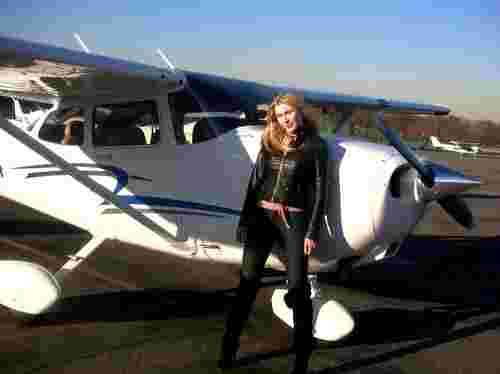Take Her FLYING!
10 Dec 2013 by Maryna Dar in Advice, Airplanes, Dating, Home, Pleasure, Sex, Speed

When planning a special date, why not take her flying?! Flight schools around the country offer the ‘Discovery Flight’ which is basically an introduction to flying. You, her and your instructor go on a single engine plane, take on the sights and learn the pleasures of flying. It’s short, inexpensive and will surely provide a memory she’ll never forget!

For locations around the country go to www.letsgoflying.com for the New York Tri-State area we recommend Panorama Flight Service www.flypfs.com The have qualified instructors ready to take you to the skies.


And if after you get a taste you’re interested in going for your license, the school is more than ready to guide you along.
In many ways learning to fly is a lot like getting your driver’s license. The difference is that you’ll be taught by a certificated flight instructor in an airplane, instead of a drivers’ ed teacher in a car. You’ll actually start flying the airplane on the very first lesson!
So how do you get started?
1. Find a flight school.
Chances are good there’s a flight school less than an hour from your home. Search this online database to find flight
schools near you. Then visit each to find one with an atmosphere that best suits your learning needs.

2. Take an introductory flight.
Sign up for a short, introductory flight to find out what it’s like to be at the controls of an aircraft. You’ll see what it’s like to visually inspect the aircraft before flight, take off, fly, land, park, and shut down!
3. Choose an instructor.
Some schools will assign you an instructor; others may introduce you to several and let you choose.
Assess your own learning style and find an instructor with a compatible teaching style. If after a few lessons you don’t think things are gelling, schedule a lesson with another flight instructor. It’s OK to switch to an instructor whose teaching style better meets your needs.
4. Select a type of certificate.
You have three types of pilot certificates to choose from when you first start flying: private, recreational, or sport. Talk to your flight instructor about the type of flying you want to do and the amount of money you are willing to invest. This will allow him or her to guide you to the right certificate.

5. Select a type of aircraft.
General aviation aircraft range from hot air balloons to business jets. The type of aircraft you choose will depend on how you intend to use it. If you plan to fly locally for fun, you’ll want to train in a smaller, slower, more fuel-efficient airplane. If business trips and family vacations are on the horizon, you might want to train in a sleek, roomy, four-seat airplane. Here is a list of typical aircraft used for training.
6. Budget your time and money.
Calculate the hourly cost for the flight instructor, aircraft rental, and fuel. After you run the numbers, decide how often you can fly and then pencil lessons in your schedule. You’ll find that establishing a budget and schedule will make the flight training process smoother.

7. Apply for your student pilot certificate.
This is similar to the learner’s permit that you received when you were learning how to drive. In some cases, the student pilot certificate is part of your medical certificate, which certifies that you are fit for flight.
Talk to your flight instructor early in your training about getting a student pilot certificate and/or medical certificate.
8. Talk to pilots.
Pilots love to talk about flying and are always willing to give advice.
For more information visit www.letsgoflying.com

Location: Panorama Flight Service, Westchester Airport, NY









